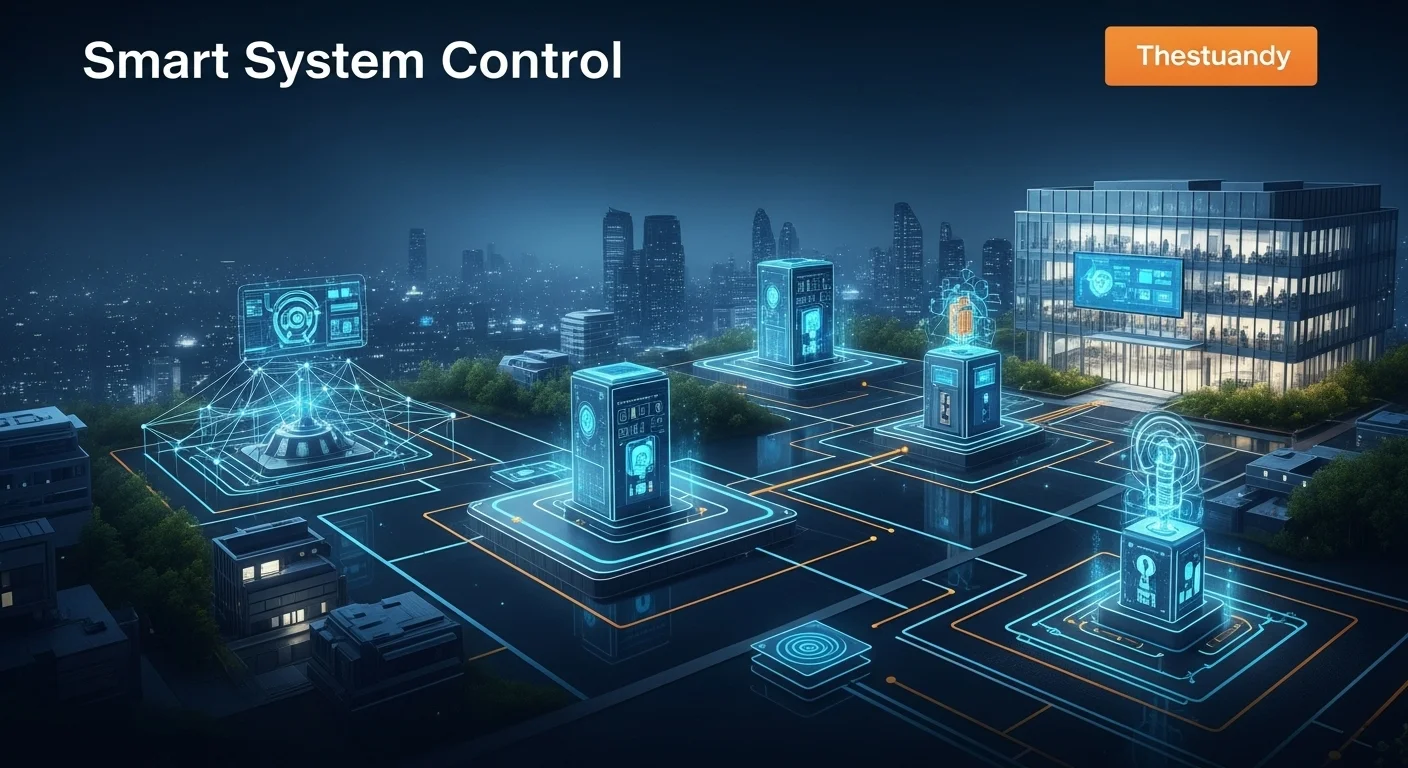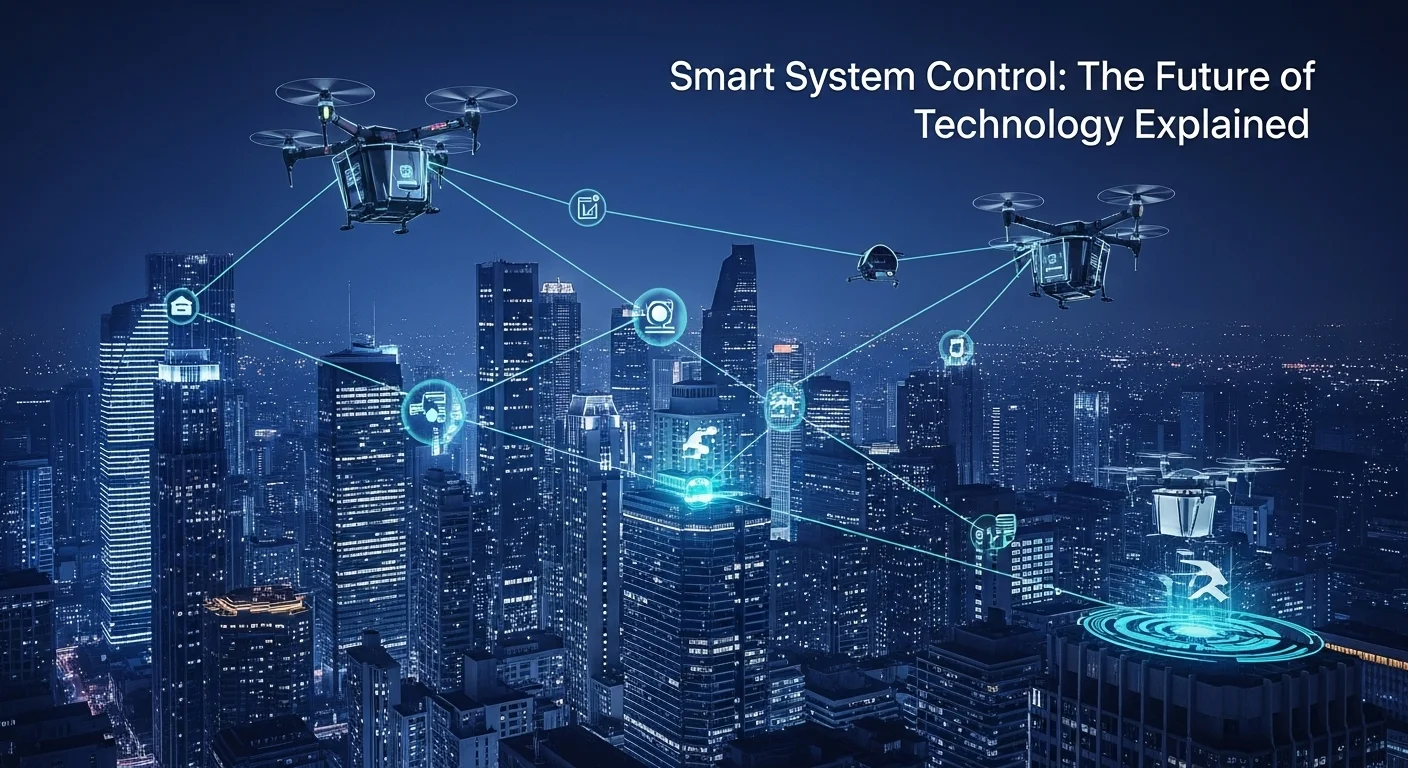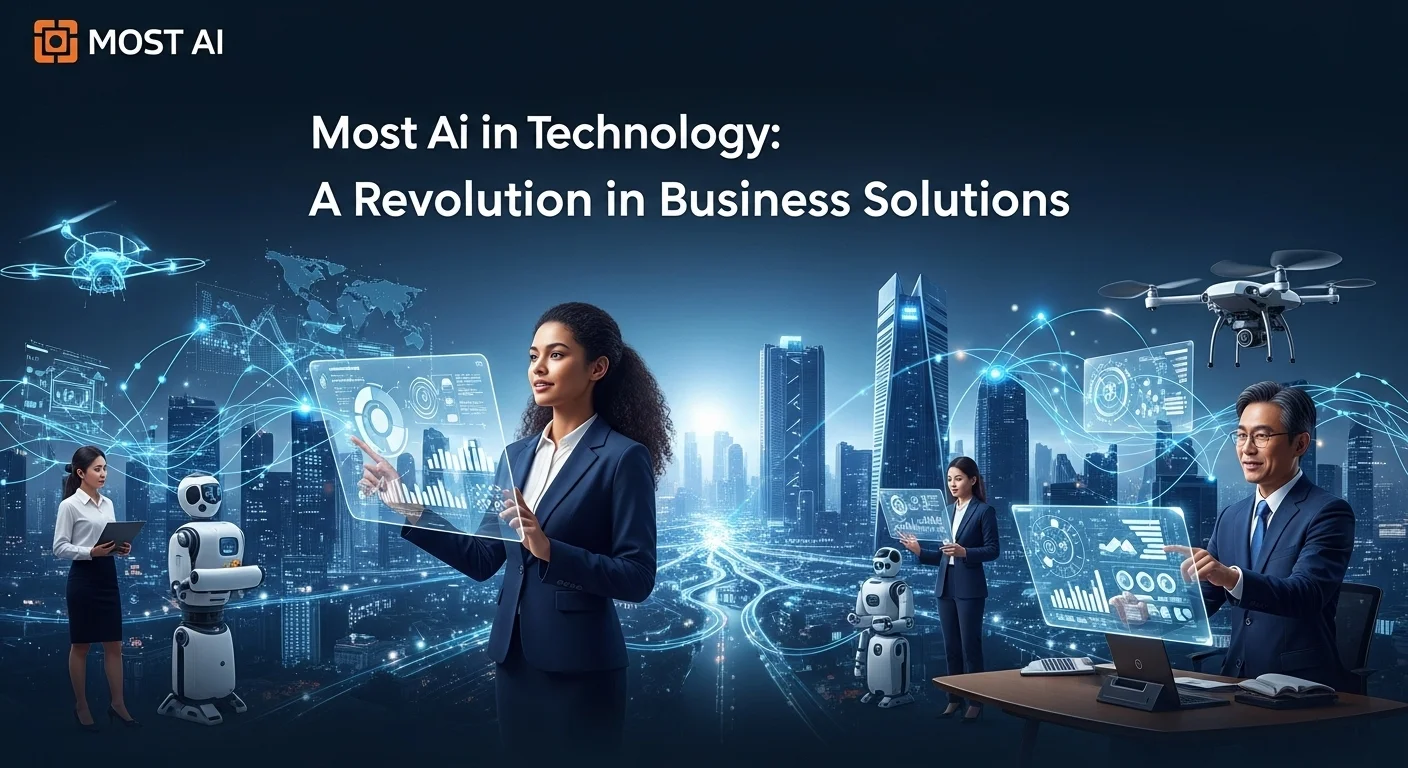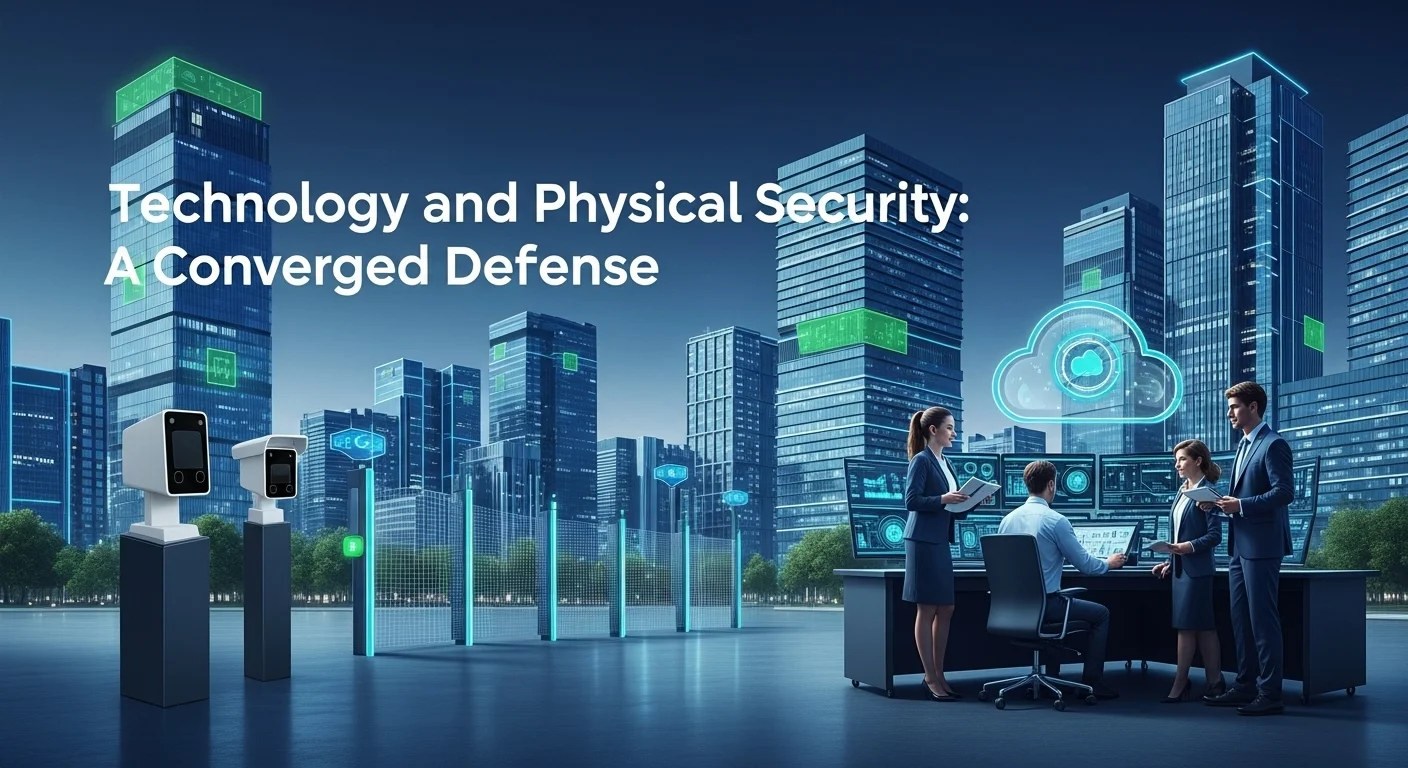What is Smart System Control? A Practical Guide for Homes & Business

Executive Summary
Smart System Control isn't just a tech buzzword; it's the invisible force making our world more responsive and intelligent. In simple terms, it's about connecting different devices—from lights in your home to machines in a factory—and giving them a 'brain' to work together automatically. I've seen firsthand how this transforms businesses, slashing energy costs and boosting productivity in ways that were once science fiction. For homeowners and tech lovers, it's the magic behind a truly convenient smart home that anticipates your needs. This article is my practical guide, distilled from years of experience. We'll break down what this technology is, explore the building blocks like communication protocols and AI, and provide clear, actionable steps for using it to create a smarter, more efficient future for your business or home.
Table of Contents
What is Smart System Control... in Plain English?
I've spent over a decade in this field, and the term 'Smart System Control' still gets thrown around a lot. So, what does it actually mean? At its heart, Smart System Control (SSC) is the conductor of an orchestra of smart devices. It’s an intelligent framework that automates, manages, and optimizes how individual gadgets work together as a single, cohesive unit. Think of it as moving beyond a simple remote control. We're creating a responsive ecosystem where devices talk to each other, share information, and make decisions on their own. This is the technology that breathes life into the Internet of Things (IoT), turning a pile of 'smart' products into a genuinely intelligent environment. Its importance is huge; it marks a shift from us serving our technology to our technology serving us, learning our habits and adapting to our needs with incredible efficiency. From our living rooms to massive industrial plants, Smart System Control is quietly shaping the future of automation.
The Core Building Blocks of a Smart System
To really get what makes SSC so powerful, it helps to understand its basic structure. I like to think of it like the human body. A typical smart system has four layers that work in harmony:
1. The Perception Layer (The Senses): This layer is all about gathering information from the real world. It's made up of sensors and data collectors—the system's eyes, ears, and sense of touch. These can be anything from temperature and motion sensors to cameras and microphones. In a factory, it might be a sensor listening to the vibrations of a machine. In your home, it's the thermostat checking the room temperature. The quality of this data is everything; garbage in, garbage out.
2. The Network Layer (The Nervous System): Once the senses collect data, it needs to travel. The network layer is the nervous system that carries these signals. It uses various communication languages (protocols) like Wi-Fi, Bluetooth, Zigbee, and 5G. The right choice depends on the job. A battery-powered smart lock might use low-power Zigbee, while a 4K security camera needs the high-speed data lane of Wi-Fi.
3. The Processing Layer (The Brain): This is where decisions are made. The processing layer, or controller, gets data from the network and figures out what to do. This 'brain' could be a small hub in your home, a powerful server in the cloud, or even a chip right on the device itself (known as 'edge' computing). This is where software algorithms and Artificial Intelligence (AI) analyze the data to spot patterns and trigger commands. For example, the brain processes that the sun has set (from a light sensor) and no one is home (from your phone's location) and decides to turn on the porch lights.
4. The Application Layer (The Action): This is where the decision becomes a physical action. This layer includes actuators—devices that do things in the real world, like smart light bulbs, motorized blinds, or your HVAC system. It also includes the ways we interact with the system, like a smartphone app or a voice assistant. This is how the system's 'control' becomes a real-world result, like dimming the lights for movie night.
The Perfect Example: Your Smart Home
The most relatable example of SSC in action is the modern smart home. It perfectly shows those four layers at work. Motion, door, and temperature sensors are the 'senses'. They communicate via Wi-Fi and Zigbee to a central hub—the 'nervous system'. That hub, often connected to the cloud, processes the information and runs automations—the 'brain'. Finally, the smart speakers we talk to, the app on our phone, and the devices that respond—like an intelligent lighting system—are the 'action'.
Speaking of which, smart lighting has been the gateway for so many people into home automation. A basic setup lets you turn lights on with your phone. But a truly *smart* lighting system integrates with everything else. I've helped clients set up systems where the lights sync with their security cameras, flashing to deter an intruder, or link to their GPS to light up the driveway as they pull in. This deep level of integration is the magic of great SSC.
And it doesn't stop at the front door. Well-designed outdoor smart lighting systems can enhance security by illuminating pathways when motion is detected and scheduling landscape lights to save energy. These systems have to be tough and weather-resistant, showing how SSC principles adapt to different challenges. Seeing a home's entire lighting scheme, inside and out, work in perfect harmony is a testament to the power of a well-designed smart system.
Beyond the Home: Real-World Business Impact
While the smart home is cool, the real economic revolution driven by Smart System Control is happening in business. Companies are using SSC to achieve incredible results.
1. Smart Buildings & Energy Savings: I've worked on commercial projects where integrating HVAC, lighting, and security has cut energy bills by over 30%. The building's management system analyzes occupancy data to heat or cool only the spaces being used and adjusts lighting based on daylight. This isn't just about saving money; it's about building a more sustainable future.
2. Industry 4.0 & Smart Factories: In manufacturing, SSC is the engine of what we call Industry 4.0. We put sensors on machines to predict when they'll need maintenance, preventing expensive breakdowns before they happen. This 'predictive maintenance' is a game-changer. The entire production line becomes more agile, efficient, and resilient.
3. Smart Agriculture: Farming is becoming a high-tech science. Sensors in the soil tell automated irrigation systems exactly how much water to use, preventing waste and boosting crop yields. It's about growing more with less, which is critical for feeding a growing planet.
4. Logistics & Supply Chains: SSC provides a god-like view of the entire supply chain. GPS trackers and sensors monitor goods from the warehouse to the customer's door, optimizing delivery routes in real-time around traffic and weather. This visibility creates massive efficiencies.
The benefits for any business are undeniable: dramatic efficiency gains from automation, lower costs from energy savings and predictive maintenance, stronger security from intelligent monitoring, and powerful data insights that lead to smarter business decisions. This is no longer a futuristic dream; it's a competitive tool for success today.

A Complete Guide to Smart System Control in Technology and Business Solutions
Knowing the 'what' and 'why' is a great start. Now, let's get into the 'how.' This is where we roll up our sleeves and look at the technical nuts and bolts. As an architect of these systems, I can tell you that making the right choices on communication protocols, computing models, and platforms is what separates a frustrating gadget collection from a truly intelligent system.
A Deep Dive into Communication Protocols: The Language of Devices
For a smart system to work, its components need to speak the same language. Choosing that language—the communication protocol—is one of the most critical decisions you'll make. Here’s my real-world take on the main players:
Wi-Fi: The one we all know. It’s like the superhighway of data—fast and everywhere. It's perfect for devices that stream a lot of information, like security cameras. The downside? It's power-hungry, so it's a poor choice for small, battery-operated sensors.
Bluetooth & BLE: Your go-to for short-range connections, like your phone to your headphones. Bluetooth Low Energy (BLE) is the hero for small IoT devices like smart locks, letting them run for ages on a tiny battery. It can also create 'mesh' networks, which is a big plus.
Zigbee: A personal favorite of mine for smart home projects. Zigbee is designed for automation. It sips power and creates incredibly reliable mesh networks. In a Zigbee mesh, if one light bulb can't reach the hub, it sends the message through a closer one. It's self-healing and robust, making it ideal for lighting and sensor networks.
Z-Wave: Zigbee's main rival. Its biggest advantage is that it uses a different radio frequency than Wi-Fi, so there's less interference—a huge benefit in crowded apartment buildings. All Z-Wave devices must be certified to work together, which takes a lot of the guesswork out for consumers.
Thread: A newer, very promising protocol backed by giants like Google and Apple. It’s built on the same foundation as the internet (IP), which means devices can connect more directly without a proprietary hub. It's secure, reliable, and built for the future.
Matter: This isn't a protocol, but a universal translator. For years, my biggest headache was that a device from Brand A couldn't talk to a system from Brand B. Matter fixes this. It’s an application standard that runs on top of Wi-Fi and Thread. A 'Matter' logo means it will just work, whether you use Apple Home, Google Home, or Amazon Alexa. For consumers, this is the single most important development in years.
Platforms and Ecosystems: The Brains of the Operation
The platform is the software that orchestrates everything. Choosing one is a big commitment, so you need to know the landscape.
For Consumers (The Smart Home):
- Amazon Alexa: The giant in the room, thanks to Echo devices. It has the most third-party integrations ('skills'), but it's very dependent on the cloud.
- Google Home/Assistant: Its main strength is its powerful AI and natural language understanding. It integrates beautifully if you're already in the Google/Android world.
- Apple HomeKit: The choice for those who prioritize privacy and security. It does more processing locally instead of sending everything to the cloud. The experience is incredibly polished, though device selection is more limited.
- Home Assistant: This is for the tech enthusiast who wants ultimate control. It's open-source, runs locally on your own hardware, and can be customized to integrate almost anything. It has a steeper learning curve, but the power it offers is unmatched.
For Businesses (Commercial & Industrial):
Business platforms are in a different league. Companies like Siemens, Johnson Controls, and Honeywell offer massive, scalable platforms for managing entire smart buildings. In the industrial world, platforms from GE and Microsoft Azure provide the backbone for smart factories. These are all about reliability, security, and deep data analytics—far beyond what a consumer system offers.
The Role of AI, Cloud, and Edge Computing
The intelligence of a modern SSC comes from a trio of technologies: AI, the Cloud, and the Edge.
Artificial Intelligence (AI): AI is what makes a system 'smart' instead of just 'automated'. Instead of just following rules you set, an AI-powered system learns. Your thermostat learns your schedule. Your factory's control system learns to spot the signs of a machine failure before it happens. This is the leap to a system that adapts to you.
Cloud Computing: I explain the cloud to my clients as a brain with near-infinite power and memory. It's essential for storing huge amounts of data, training complex AI models, and letting you control your system from anywhere. The catch? It needs a constant internet connection and there's always a slight delay (latency).
Edge Computing: To solve the cloud's weaknesses, we use edge computing. This means processing data right on or near the device itself—at the 'edge' of the network. Think of it like a reflex. You don't need to think to pull your hand from a hot stove; the decision happens locally and instantly. Edge computing provides that speed and reliability. Your smart light switch should still work even if your internet is down. The best systems use a hybrid approach: the Edge handles instant actions, while the Cloud handles heavy analysis and long-term learning.
Cybersecurity: The Foremost Challenge
Let me be blunt: with great connectivity comes great risk. Every smart device on your network is a potential door for a hacker. The consequences can range from annoying to catastrophic. Forgetting to secure your smart systems is like leaving the back door of your business unlocked. It is non-negotiable.
My Security Checklist for Any Project:
- End-to-End Encryption: Data must be scrambled both when it's traveling and when it's stored. No exceptions.
- Rock-Solid Authentication: Use strong, unique passwords and always enable two-factor authentication (2FA).
- Consistent Updates: Only use products from manufacturers who have a proven track record of providing timely security patches. And actually install them!
- Network Segmentation: In a business setting, I always put the smart control systems on their own separate network, isolated from the main corporate network. A hacked thermostat should never be able to access your financial data.
- Demand 'Secure by Design': Security can't be an afterthought. It has to be baked into the product from the very beginning.

Tips and Strategies for Smart System Control to Improve Your Technology Experience
Putting a Smart System Control solution into place, whether it’s for your home or a global enterprise, is a journey. It demands careful planning and a commitment to doing things right. Over the years, I've seen what works and what doesn't. Here are my go-to strategies to help you get the most out of this technology.
Best Practices for Businesses Implementing Smart System Control
For a business, adopting SSC is more than a tech upgrade; it's a strategic shift. Here's the roadmap I walk my clients through to ensure a successful, high-return-on-investment project.
1. Start with 'Why?': Before you even think about technology, define your goals. Don't just say 'save energy.' A better goal is 'Reduce HVAC energy consumption by 15% in the next 12 months.' Be specific and make it measurable. This clear objective will be your North Star for every decision that follows.
2. Run a Pilot Project: Please, do not try to automate your entire operation at once. Start small. Pick one area, like implementing smart lighting on one floor or monitoring one critical machine. A pilot project is a low-risk way to test the tech, learn valuable lessons, and prove the concept to get buy-in for a larger rollout.
3. Don't Get Trapped: I’ve seen companies get locked into a single vendor's proprietary system, which severely limits their future options. Prioritize platforms built on open standards. Scalability is just as important. Your system must be able to grow from 50 devices to 5,000 without needing a complete re-architecture.
4. Make Security Job Zero: Bring your IT and cybersecurity teams into the conversation from day one. They need to vet every piece of hardware and software. The security of your entire company could be at stake from one poorly secured smart sensor. It's that serious.
5. Invest in Your People: This new tech will require new skills. You must budget for training your staff on how to use and maintain these systems. Automation changes roles, so you also need a change management plan to communicate the benefits and support your employees through the transition. A system people don't know how to use is worthless.
6. Launch is Just the Beginning: The real magic of SSC is the data it produces. Your job isn't done at launch. You need to constantly monitor performance, analyze the data to find new efficiencies, and optimize the system. A smart system is a living thing that should get better and more valuable over time.
Tips for Home Users to Maximize Their Smart Home Experience
For individuals, creating a smart home should be fun, not frustrating. Here's my advice to friends and family just starting out.
1. Have a Simple Plan: Before you click 'buy,' think about a problem you want to solve. Is it convenience (lights turning on automatically), security, or saving money on your energy bill? A simple plan helps you buy devices that actually work together.
2. Pick Your Team: Your main choices for a controlling ecosystem are Amazon Alexa, Google Home, or Apple HomeKit. Your choice often depends on the phone or smart speakers you already have. My top tip for 2024 and beyond? Look for the 'Matter' logo. It's the future of interoperability and will make your life much easier.
3. Start Small, Grow Smart: You don't need to automate your whole house on day one. A smart lighting system is the perfect starting point. It's affordable, easy, and gives you an immediate 'wow' factor. Start with a few bulbs or a switch, get comfortable, and then expand to a thermostat, locks, or cameras.
4. Your Wi-Fi is the Foundation: Every smart device you add puts a little more strain on your home Wi-Fi. If your router is a few years old, you might start seeing issues. For a truly reliable smart home, especially a larger one, investing in a modern mesh Wi-Fi system is one of the best upgrades you can make.
5. Become the Master of Routines: The real power of a smart home isn't asking Alexa to turn on a light. It's having the light turn on automatically. Dig into the 'Routines' or 'Automations' section of your app. Create a 'Good Morning' routine that gently brightens the lights and starts your coffee maker. A 'Goodbye' routine can turn everything off and lock the door with one command. This is what transforms a collection of gadgets into a truly intelligent home.
Future Trends in Smart System Control
This field moves incredibly fast. Here's a glimpse of what I'm most excited about and what's coming next:
Hyper-automation: This is about automating entire complex processes, using advanced AI to handle tasks that previously required teams of people. It’s the next level of business efficiency.
Ambient Computing: The tech will disappear into the background. We won't be tapping on apps; we'll interact with our environment through voice, gestures, or even just our presence. The system will be smart enough to anticipate what we need without us even asking.
Digital Twins: This is a game-changer for industry. We create a perfect virtual replica of a real-world factory or process. We can then test changes, run simulations, and break things in the virtual world to find the optimal solution before spending a dime in the real one.
Generative AI Integration: Imagine telling your building's control system, 'Show me our energy usage last quarter and suggest three ways to cut costs.' Generative AI, like the tech behind ChatGPT, will allow for this kind of natural, powerful interaction, turning complex data into actionable insights instantly.
To keep up with the fast-moving world of interoperability, I always recommend checking the Connectivity Standards Alliance website. Understanding where this is all heading is key to making smart investments today.
Expert Reviews & Testimonials
Sarah Johnson, Business Owner ⭐⭐⭐⭐
As a small business owner, I found the overview of Smart System Control really helpful. I wish it had a few more specific case studies for retail or service businesses, but it gave me a great starting point for thinking about energy savings.
Mike Chen, IT Consultant ⭐⭐⭐⭐
Solid technical breakdown, especially the comparison of Zigbee and Z-Wave. As an IT consultant, I appreciated the depth. A few diagrams for the system architecture would have made it perfect. Overall, a great resource.
Emma Davis, Tech Expert ⭐⭐⭐⭐⭐
This is one of the best articles on SSC I've read. It connects the high-level concepts to practical advice beautifully. The section on choosing an ecosystem and the explanation of Matter was exactly what I needed. Five stars!



